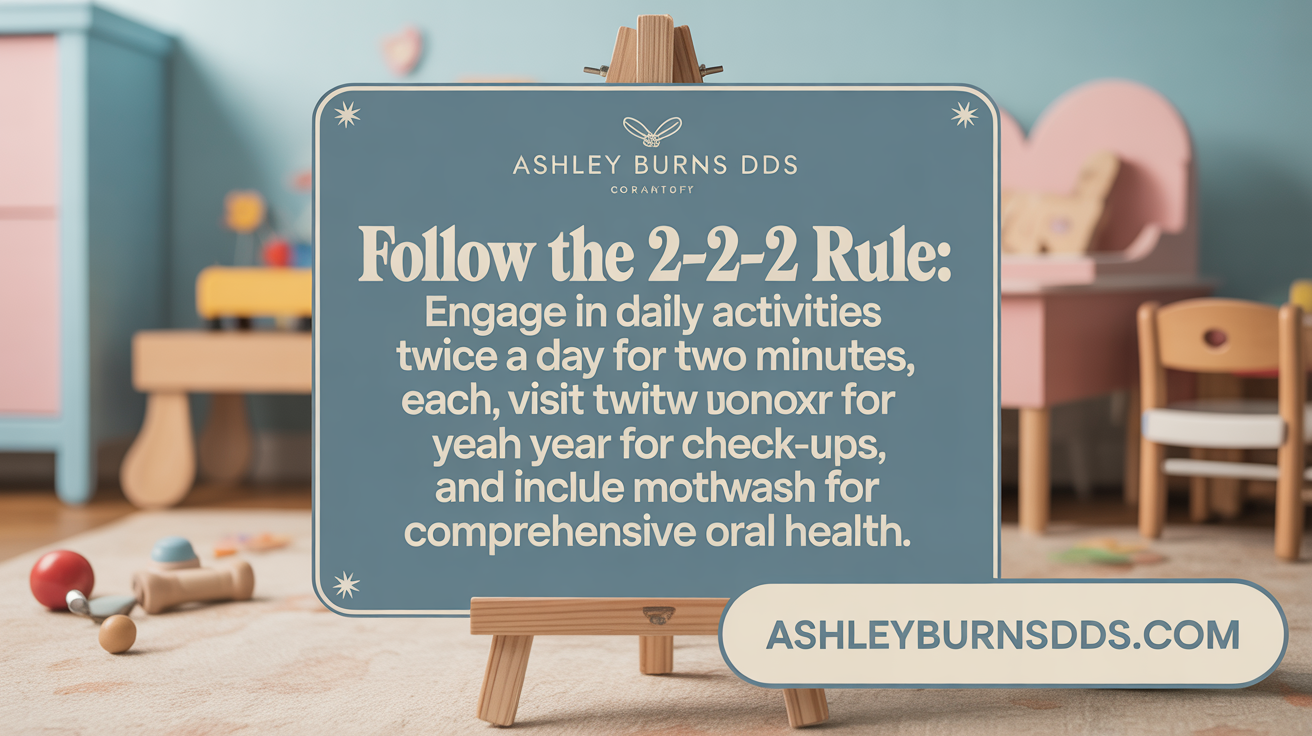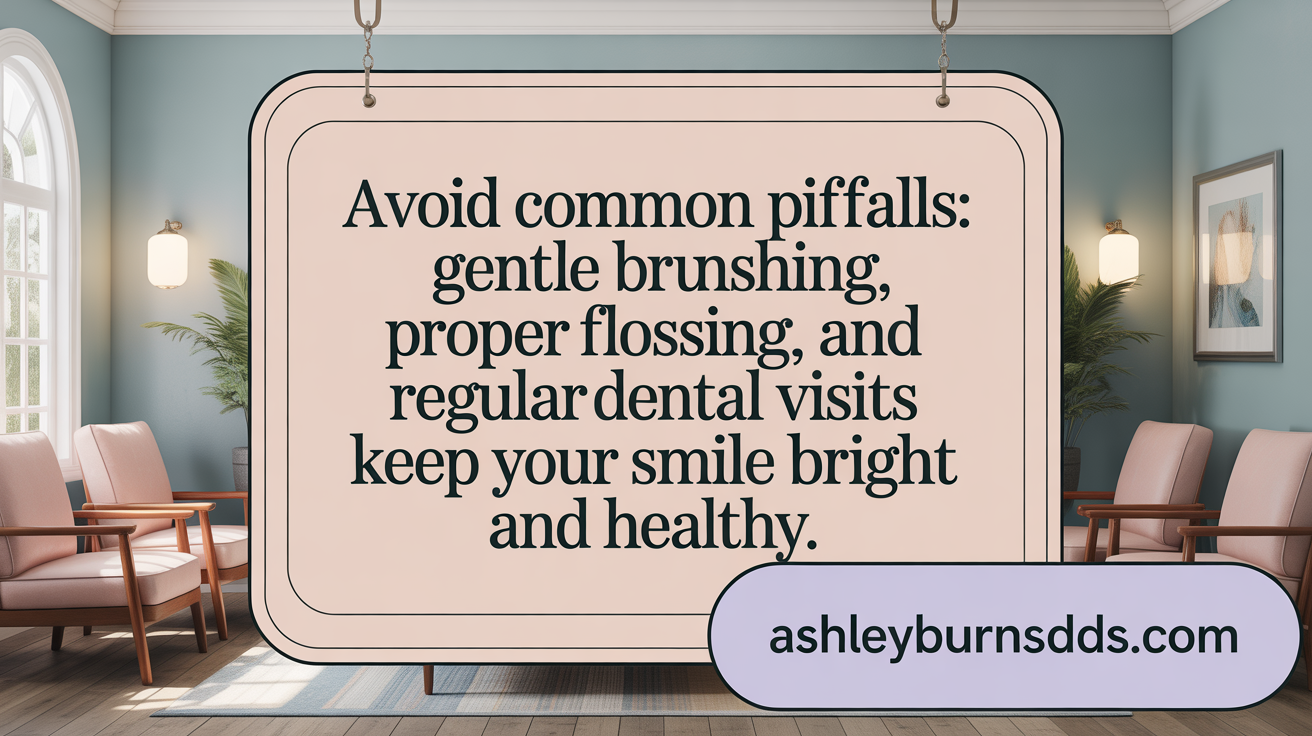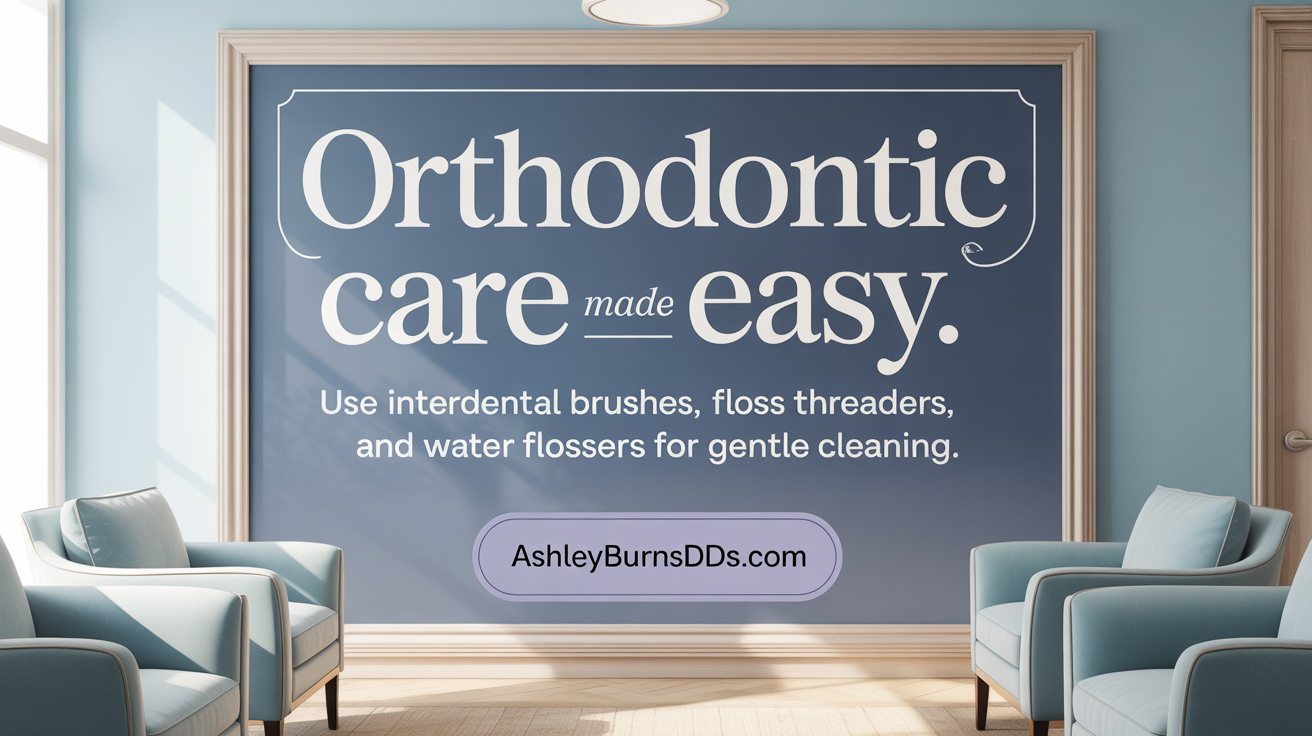Why Proper Brushing and Flossing Matter
Maintaining a healthy smile goes beyond just cosmetic appeal — it’s essential for overall health. Proper brushing and flossing are the foundation of effective dental hygiene, preventing decay, gum disease, and other oral issues. This article compiles expert tips and professional guidelines to help you optimize your daily oral care routine for lasting oral health.
Essential Brushing Techniques for Optimal Oral Health

What is the 2-2-2 rule for brushing teeth?
The 2-2-2 rule is a simple guideline that promotes healthy teeth and gums. It recommends brushing your teeth twice a day — once in the morning and once before bed — for at least two minutes each session. This ensures all surfaces of the teeth are cleaned thoroughly.
In addition to brushing, the rule also suggests visiting your dentist twice a year for checkups and professional cleanings. This routine helps keep dental problems like cavities and gum disease at bay.
It’s also important to use a soft-bristled toothbrush and gentle, circular motions at a 45-degree angle to your gums. Cover all areas, including the backs of teeth and the tongue, to remove plaque effectively.
By consistently following the 2-2-2 rule, individuals can maintain a bright, healthy smile and prevent common dental issues over time.
Correct brushing duration
Brushing for a full two minutes ensures that each part of your mouth receives adequate attention. Shorter brushing might leave plaque behind, increasing the risk of decay and gum disease.
Toothbrush selection and maintenance
Choose a toothbrush with a small head and soft or medium bristles for effective cleaning without irritating gums. Both manual and electric toothbrushes are effective if used properly.
Replace your toothbrush or electric head every three to four months to avoid bacteria buildup and bristle deterioration.
Proper brushing motions and angles
Hold your toothbrush at a 45-degree angle against your gums. Use small, gentle circular motions or short back-and-forth strokes, avoiding excessive pressure, which can damage gums.
Brush all surfaces of each tooth: the outer, inner, and chewing surfaces. Don’t forget to brush the tongue and roof of the mouth to reduce bacteria and freshen breath.
Coverage of all tooth surfaces including tongue
Effective brushing covers all areas of your teeth and mouth. Start with the outer surfaces using gentle circles, then move to inner surfaces, and finally the chewing surfaces.
Use the tip of the brush for the inside of front teeth. To keep breath fresh, gently brush the top of your tongue.
Fluoride toothpaste use
Use a fluoride toothpaste, ideally containing 1350–1500 ppm fluoride, suited to your age and risk of cavities. Fluoride helps strengthen enamel and protect against decay.
Apply about a pea-sized amount for adults and children. After brushing, do not rinse immediately to allow fluoride to stay on teeth longer.
Common brushing mistakes to avoid
Avoid scrubbing or using excessive force, as this can erode enamel and cause gum recession. Do not forget to brush the tongue and roof of the mouth. Ensure you brush at least twice daily for two minutes each time. Avoid rinsing immediately after brushing to maximize fluoride benefits.
Regularly replacing your toothbrush and maintaining proper technique boosts oral health and keeps your smile bright. Following these practices ensures a comprehensive approach to daily dental care, preventing problems and promoting lasting oral health.
Mastering Flossing: Techniques and Tools for Healthy Gums

What are proper flossing techniques to maintain oral health?
Proper flossing begins with selecting the right amount of floss—about 18 inches—and winding most of it around each middle finger. Keep a firm hold with your thumbs and forefingers, ensuring the floss is taut.
Gently slide the floss between your teeth, using a rubbing or gentle back-and-forth motion. Once the floss reaches the gumline, curve it into a C-shape around each tooth. This technique helps to reach beneath the gumline effectively.
Rub the sides of each tooth with up-and-down motions, cleaning both the inner and outer surfaces, as well as the back teeth. Be careful to avoid snapping or forcing the floss, which can cause gum injury or bleeding.
Always use a fresh section of floss when moving to a new tooth, preventing the transfer of bacteria.
Consistent, gentle flossing helps to remove food particles and plaque that toothbrushes cannot reach, reducing the risk of cavities, gum disease, and bad breath.
What are the recommended tools for flossing?
Traditional string floss remains popular, but there are also various tools designed to make flossing easier:
- Floss picks and pre-threaded floss holders
- Interdental brushes
- Water flossers or oral irrigators
- Floss threaders for difficult-to-reach areas
Choosing the right tool depends on personal preference and specific oral needs. For example, orthodontic patients may benefit from special flossers for braces, while those with large gaps between teeth might prefer interdental brushes.
Why is daily flossing important and when should it be done?
Daily flossing is vital because it removes plaque and food debris from between teeth, areas that toothbrushes can't clean effectively.
It’s recommended to floss at least once a day, ideally at night, after the last meal of the day. Flossing before brushing can allow fluoride from toothpaste to better penetrate between teeth, enhancing decay prevention.
Completing your oral hygiene routine with regular flossing can significantly lower your risk of developing cavities, gum inflammation, and halitosis.
What are common mistakes to avoid when flossing?
Avoid these common errors to maximize the benefits of flossing:
- Snapping or forcing the floss, which can damage gums
- Using the same section of floss for multiple teeth
- Not reaching beneath the gumline
- Flossing less than once a day
- Flossing aggressively, leading to gum bleeding
Proper technique involves gentle, thorough cleaning, and patience. If bleeding persists, consult your dentist, as it may indicate inflammation or improper technique.
The Optimal Order and Frequency for Brushing, Flossing, and Mouthwash Use

What is the recommended order for brushing, flossing, and using mouthwash?
A well-structured oral hygiene routine typically starts with flossing. Flossing helps remove food particles and plaque from between teeth and along the gum line, areas that a toothbrush can’t reach effectively. Once the interdental spaces are cleared, brushing follows. Brushing with fluoride toothpaste cleans the surfaces of the teeth, removes residual plaque, and strengthens enamel against decay.
Many dental health sources recommend using mouthwash last in the sequence. This is because mouthwash can freshen breath, kill bacteria, and help reach areas that might be missed during brushing and flossing. Additionally, using mouthwash after brushing allows fluoride ingredients to stay longer on the teeth, providing better protection.
However, some organizations, like the National Health Service (NHS), advise against rinsing immediately after brushing with water or mouthwash. They suggest that mouthwash should be used at a different time of the day to maximize fluoride contact with the teeth. Despite variations in advice, maintaining a consistent routine that covers thorough flossing, proper brushing, and strategic mouthwash use ensures effective oral care.
In summary, the optimal sequence involves flossing first, then brushing, and finishing with mouthwash, unless specific product instructions suggest otherwise. This order helps maximize cleaning, fluoride benefits, and overall oral health.
Avoiding Common Brushing and Flossing Mistakes

What are common mistakes to avoid while brushing and flossing?
Maintaining proper oral hygiene requires attention to technique and habits. One frequent mistake is brushing too hard, which can cause gum recession and wear down tooth enamel over time. It’s important to hold the toothbrush gently and use small circular motions at a 45-degree angle toward the gum line.
Using a worn toothbrush with frayed bristles diminishes cleaning effectiveness. Replace your toothbrush or electric head every three to four months to ensure effective plaque removal. An aged brush can harbor bacteria and fail to clean properly.
When flossing, avoid snapping or forcing the floss, as this can cut or bruise your gums. Instead, gently slide the floss into the space between your teeth, curve it into a C-shape around each tooth, and rub up and down multiple times.
Another common mistake is brushing immediately after consuming acidic foods or drinks, such as citrus or soda. The acid temporarily softens enamel, and brushing right away can cause erosion. Wait at least 60 minutes before brushing to allow saliva to neutralize the acid.
Not cleaning your tongue can contribute to bad breath and bacterial buildup. Use a gentle brush or scraper to remove bacteria from the tongue's surface regularly.
Lastly, neglecting routine dental visits and professional cleanings deprives you of early detection of potential issues and professional removal of tartar that home care can’t address.
A comprehensive approach with proper technique and regular care helps keep your smile healthy and bright.
| Mistake | Impact | Better Practice |
|---|---|---|
| Brushing too hard | Gums and enamel damage | Use gentle pressure and circular motions |
| Using worn toothbrushes | Less effective cleaning | Replace every 3-4 months |
| Improper floss snapping or force | Gums injury, ineffective cleaning | Gently slide floss, curve into C-shape |
| Brushing immediately after acidic meals | Enamel erosion | Wait 60 minutes before brushing |
| Neglecting tongue cleaning | Bad breath, bacteria buildup | Brush or scrape tongue daily |
| Irregular dental checkups | Missed early issues | Visit dentist biannually |
Understanding and avoiding these mistakes promotes better oral health for a brighter smile.
Special Considerations: Oral Care During Orthodontic Treatment and Recommended Tools

What are the challenges of cleaning with braces?
Orthodontic appliances like braces pose unique challenges for maintaining oral hygiene. They create additional spaces and surfaces that can trap food particles and plaque, making it harder to clean effectively with a regular toothbrush. Brackets, wires, and bands can hinder thorough brushing and flossing, increasing the risk of plaque buildup, white spots, cavities, and gingivitis if not properly managed.
Use of interdental brushes, floss threaders, water flossers
To combat these challenges, dental professionals recommend specialized tools such as interdental brushes, which can reach around brackets and wires for more effective plaque removal. Floss threaders help guide floss beneath wires, ensuring thorough cleaning between teeth and around appliance components. Water flossers use a gentle stream of water to wash away debris and bacteria from hard-to-reach areas, providing an easy-to-use option for effective cleaning.
Benefits of proper brushing/flossing for orthodontic patients
Consistent and proper oral care during orthodontic treatment helps prevent plaque accumulation, which reduces the risk of cavities, gum inflammation, and white spot lesions. Using appropriate tools ensures that food debris and plaque are effectively removed from around brackets and under wires.
Recommended tools and products for effective oral hygiene
Selecting the right tools is essential. These include:
| Tool Type | Description | Best Use Cases |
|---|---|---|
| Soft-bristled toothbrush | Gentle on gums and effective at cleaning | Daily brushing of all tooth surfaces |
| Interdental brushes | Small brushes designed to clean between brackets and wires | Reaching around orthodontic appliances |
| Floss threaders | Guides floss under wires | Flossing between teeth with braces |
| Water flossers | Uses water pressure to clean difficult areas | Gentle cleaning around brackets |
| Orthodontic flossers | Special flossers designed for braces | Efficient interdental cleaning |
Importance of regular professional guidance and checkups
Orthodontic patients should visit their dentist or orthodontist regularly—usually every six months—for professional cleaning and checkups. These visits help detect early signs of decay or gum disease and ensure that appliances are maintained properly. Partnering with an AAO-certified orthodontist can improve treatment outcomes and ensure the use of advanced tools tailored for orthodontic care.
Regular, thorough cleaning with suitable tools and consistent routines are crucial for maintaining oral health during orthodontic treatment. Proper hygiene not only prevents immediate issues but also supports effective teeth movement and a healthy smile after treatment completion.
Ensuring a Lifetime of Healthy Smiles
Incorporating the expert-backed brushing and flossing methods outlined here, along with regular dental visits and proper tool selection, forms the cornerstone of excellent oral health. Whether you are undergoing orthodontic treatment or simply aiming to prevent cavities and gum disease, a consistent, gentle, and thorough oral hygiene routine makes all the difference. Remember, the benefits of daily care extend beyond your mouth to your overall well-being. Embrace these habits today for a brighter, healthier smile tomorrow.
References
- Flossing | MouthHealthy - Oral Health Information from the ADA
- How to keep your teeth clean - NHS
- How to Properly Brush and Floss | Rose Dental Group | Austin, TX
- Brushing and flossing for oral health - Mayo Clinic
- Oral Hygiene | National Institute of Dental and Craniofacial Research
- Proper Flossing Technique - Mint Hill Dentistry
- Brushing and Flossing - Gentle Smiles of Colorado
